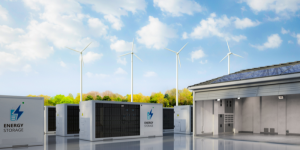For the first time in 10 years, the number of people without access to electricity and clean technologies is increasing.
Despite a 25% increase in international public financing for clean energy in developing countries in 2022, this figure still represents only half of the peak recorded in 2016 of $28.5 billion.

The report published on June 12 by a consortium of international organizations including the IEA, IRENA, the United Nations Statistics Division, the World Bank, and the World Health Organization highlights the significant challenges the world faces in pursuing the Sustainable Development Goal for energy by 2030.
Clean Technologies: In Africa, 80% of the Population is Without Electricity
The report highlights that 2022 saw a critical reversal: the number of people living without access to electricity increased for the first time in over a decade, reaching 685 million individuals, 10 million more than the previous year.
This increase is particularly alarming in sub-Saharan Africa, where over 80% of the population without electricity represents 570 million people, marking a significant rise compared to 2010 levels.
The path towards universal access to clean cooking by 2030 is equally concerning, with 2.1 billion people still using polluting fuels and technologies for cooking, especially in sub-Saharan Africa and Asia. This not only contributes to household air pollution, causing approximately 3.2 million premature deaths annually, but also has severe social and economic impacts.
Despite a 6% increase in the use of renewable electricity in 2021, bringing the global share to 28.2%, significant regional disparities remain. Developed countries boast an installed renewable energy capacity per capita of 1073 watts, while in developing countries, this figure stands at only 293 watts.
By 2030, 660 Million People Will Still Be Without Access to Electricity
The report also notes that the improvement in energy intensity in 2021 was modest, with a 0.8% increase compared to 0.6% the previous year, well below the level needed to achieve the Sustainable Development Goal by 2030.
Despite a 25% increase in international public financing for clean energy in developing countries in 2022, reaching $15.4 billion, this figure still represents only half of the peak recorded in 2016 of $28.5 billion.
With current policies, the report estimates that by 2030 about 660 million people will still be living without access to electricity and about 1.8 billion will lack access to clean cooking technologies and fuels. Progress in energy efficiency is also lacking, with a modest improvement rate of 2.3%.
These data, as highlighted in the report, underscore the urgent need to accelerate global efforts to reverse the current trend and pursue the sustainable development goals with greater determination within the established timelines.
Related Focus





